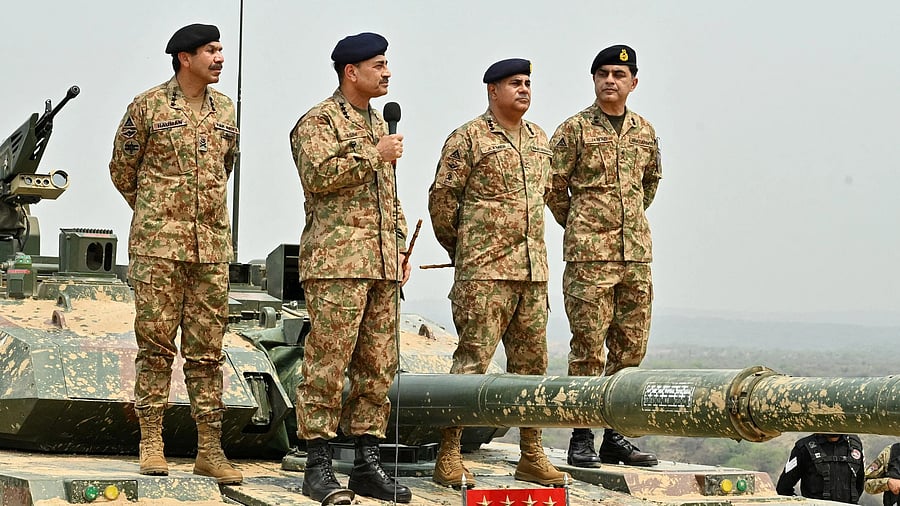
Chief of Army Staff of Pakistan Asim Munir holds a microphone during a high-intensity field training exercise conducted by the Pakistan Army.
Credit: Reuters Photo
Pakistan’s Army chief Asim Munir triggered a diplomatic flashpoint with India, warning that if his country faced an “existential threat” from New Delhi, it would retaliate with “catastrophic force", citing that it is a nuclear-armed nation. India’s Ministry of External Affairs condemned the remarks as “irresponsible” nuclear sabre-rattling, accusing Islamabad of reckless posturing amid renewed tensions over water rights and cross-border terrorism.
Munir’s threat and India’s response
Speaking in Florida to a Pakistani-origin audience, Munir — a Field Marshal — declared, “We are a nuclear nation. If we think we are going down, we’ll take half the world down with us.”
The remarks were tied to India’s suspension of Indus Waters Treaty provisions following the Pahalgam terror attack that killed 26 people. India’s Ministry of External Affairs dismissed the statement as “nuclear sabre-rattling", questioning Pakistan’s nuclear command integrity.
Pakistan’s nuclear capabilities
According to the Stockholm International Peace Research Institute (SIPRI) 2025 Yearbook, Pakistan holds roughly 170 nuclear warheads and is pursuing a full nuclear triad — air, land, and sea-based delivery systems.
Its most advanced missile, the Shaheen-3, has a 2,750 km range, covering all of India and parts of the Middle East, but falling short of Europe, East Asia, or North America. The Ababeel medium-range missile, still under development, may carry multiple independently targetable re-entry vehicles (MIRVs) but may not bypass missile defences like India’s S-400.
Shorter-range systems, including the Nasr (70 km) and Babur-3 submarine-launched cruise missile (450 km), support battlefield and tactical roles. Pakistan’s air-based component relies on ageing Mirage aircraft, with the JF-17 expected to integrate the Ra’ad cruise missile in the future.
Second-strike ambitions
Pakistan is developing a credible sea-based deterrent using Babur-3 cruise missiles on Agosta-90B submarines, though operational status remains unclear. Warhead yields, demonstrated at 12 kilotons in 1998, may have improved, but no evidence exists of thermonuclear designs.
While Munir’s claim of “half the world” coverage is exaggerated, SIPRI notes that Pakistan’s arsenal is modernising, signalling an intent to sustain regional deterrence — and heightening South Asia’s nuclear shadow.
